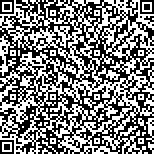|
| 引用本文: | 豆莹莹,魏定邦,李晓民,姚志杰,何孝万.沥青集料界面黏附性衰减机理研究[J].建筑材料学报,2019,22(5):771-779 |
| |
|
| |
|
|
| 本文已被:浏览 630次 下载 0次 |

码上扫一扫! |
|
|
| 沥青集料界面黏附性衰减机理研究 |
|
豆莹莹1, 魏定邦1, 李晓民1, 姚志杰1, 何孝万2
|
|
1.兰州交通大学甘肃省道路桥梁与地下工程重点实验室,甘肃兰州730070;2.重庆交通大学土木工程学院,重庆400074
|
|
| 摘要: |
| 以表面自由能理论、衰减全反射红外光谱(FTIR ATR)和原子力显微镜(AFM)等方法,从宏观和微观角度对水侵蚀作用下沥青集料界面黏附性衰减机理进行了研究,并探讨了沥青老化对该衰减过程的影响.结果表明:以羟基伸缩振动峰面积为指标,可评价沥青含水量随浸水时间延长而增加的变化规律;沥青老化后,导致水在沥青中的扩散速率加快,使水更易扩散至沥青集料界面处,并对第1扩散阶段扩散系数的影响更为显著;沥青的老化使得沥青集料界面处的黏附性降低,且在有水存在的情况下沥青膜更倾向于被水从集料表面取代,从而发生剥落;不同油源的沥青浸水后的微观结构改变十分相似,表明其与水的作用机理相同. |
| 关键词: 界面黏附性 衰减机理 衰减全反射红外光谱 原子力显微镜 |
| DOI:103969/j.issn.1007 9629201905015 |
| 分类号: |
| 基金项目:国家自然科学基金资助项目(51408287,51668038);甘肃省自然科学基金资助项目(1606RJZ042);甘肃省科技计划项目(18YF1GA035,18YF1GA036);甘肃省领军人才计划资助项目 |
|
| Adhesion Attenuation Mechanism of Asphalt Aggregate Interface |
|
DOU Yingying1, WEI Dingbang1, LI Xiaomin1, YAO Zhijie1, HE Xiaowan2
|
|
1.Key laboratory of Road & Bridge and Underground Engineering of Gansu Province, Lanzhou Jiaotong University, Lanzhou 730070, China;2.School of Civil Engineering, Chongqing Jiaotong University, Chongqing 400074, China
|
| Abstract: |
| Surface free energy theory, attenuated total reflection infrared spectroscopy(FTIR ATR) and atomic force microscopy(AFM) were used to study the asphalt under water erosion from macroscopic and microscopic perspectives. The mechanism of adhesion attenuation at the asphalt aggregate interface was studied and the effect of aging on the decay process was investigated. The results show that the water content in the asphalt increases with the prolongation of the immersion time when the peak area of hydroxyl stretching vibration is used as an index. After the aging of asphalt, the diffusion rate of water in asphalt is accelerated, which makes water more easily diffuse to the asphalt aggregate interface, and has more significant influence on the diffusion coefficient in the first diffusion stage. The aging of asphalt reduces the adhesion at the asphalt aggregate interface, and in the presence of water, the asphalt film is more inclined to be replaced by water from the surface of the aggregate, thereby causing spalling; the microstructure changes of bitumen with different oil sources after immersion are very similar, indicating that the mechanism of their interaction with water is the same. |
| Key words: interfacial adhesion attenuation mechanism attenuated total reflection infrared spectroscopy(FTIR ATR) atomic force microscopy(AFM) |
|
|
|
系统正在查找本文的参考文献,请稍候...
|
|
系统正在查找本文的被引信息,请稍候...
|
|
系统正在获取相似文献,请稍候...
|
|
|